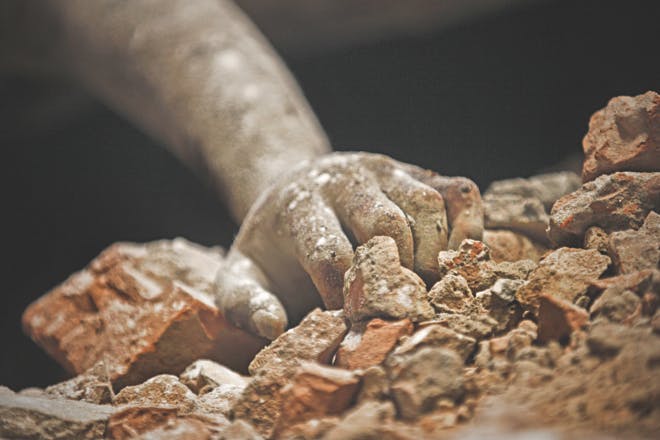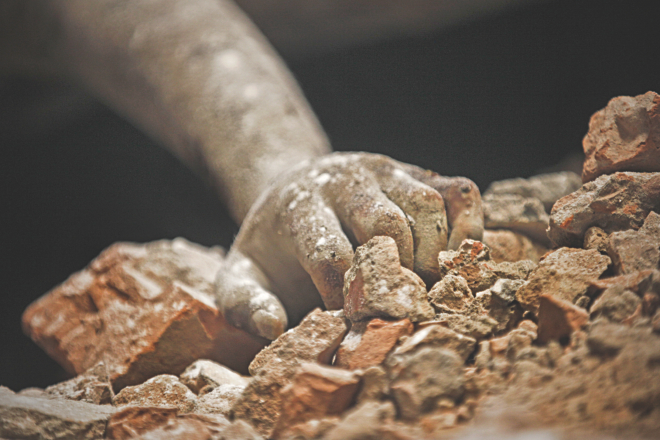The Tragedy of the Rana Plaza Collapse in Bangladesh- who will take the blame?
Jan 21, 2015
Story


The Rana Plaza collapse is considered the deadliest accidental structural failures and the worst garment-factory accident in Bangladesh to date. The death toll was an approximated 1,129 and number of casualties stood at 2,515. The building collapse stirred an emotional wave both nationally and internationally. Besides the government and various other profit and non-profit organizations, people from all walks of life responded with relief, assistance and prayers. The emergency phase was followed by the rehabilitation and recovery phase, where monetary, surgical and prosthetic support played a vital role. Various stakeholders came forward with compensations for the survivors. In undertaking the initiative of rehabilitation, BRAC partnered closely with the Government of Bangladesh and many others and came forward with assistance for victims.
As part of this initiative, under its Brace and Limb Centre (BLBC), BRAC gave prosthetic support to 12 survivors (11 semi-functional upper limb prosthetics and one lower prosthetic) and delivered braces to 35 survivors with severe spinal injuries. These survivors were also given a fixed deposit of Taka 1 lac each. Other short and long term services from BRAC included regular first-response medical teams, follow-ups, psychosocial counseling, skills development training and apprenticeship opportunities for survivors. Nearly one year after the disaster, BRAC felt it highly necessary to document the untold stories of these survivors and use the findings from the study to further fine-tune its initiatives designed at providing support to these people.
A multidisciplinary research team was formed to conduct a study to know the present condition of the survivors who benefitted from BRAC. During the months of March and April,14 the research team visited 26 such survivors. In the interviews conducted with each of these survivors, data was collected on their socio-economic status, physical and mental condition, demographic information, and treatment-seeking practices in the last one year, assistance received from various sources and also about the survivor’s future goals and aspirations. Community consultations and focus-group discussions (FGDs) were conducted to ensure data validation.
Briefly, the findings of the study indicate that most of the survivors faced increased vulnerabilities in the form of increased poverty, disempowerment, trauma, disability and perceived themselves as burdens to their families and society. During the interview, many of them have told the researchers, “What will I do with this life now? It would have been better if I just died that day.”
The research team also found that although the survivors received free treatment and empathy from the hospital management immediately after the incident, now they do not get similar support. In the helpless situation that they are in now, this is a major cause of worry for many survivors. They feel neglected and abandoned. Many respondents have also reported that in their families and within their communities, they are stigmatized due to their disabilities. Their physical disability is often seen as “deformities” and this is specially a problem for unmarried girls. In the case of married women, problems also persist. Many fear that their husbands will soon leave them because of their inability to fulfill the traditional roles of a wife, a mother and a daughter-in- law. The findings of the study are strongly reflective of the gendered aspect of disability and the process of disempowerment in an individual’s life, triggered by a life-transitioning event such as the Rana Plaza collapse in this case.
Most of these survivors had decent earnings ranging from Taka 6,000-10,000 which helped them take care of their day to day expenses and also support to their families back home. The loss of jobs has been a major disempowering factor at an individual level. Surprisingly, despite their critical physical conditions, most of the survivors feel the growing need to work to support their families, medical expenses and for continuation of their children’s education. Many of them said that in the future they plan to run a small shop or small business, poultry farm, etc in their village. It should be noted here that only 3 survivors under this study completed higher secondary education so it will be quiet difficult to involve them within any institutional framework. Interestingly, the younger female survivors expressed their desire to resume education and start afresh. One of the 16/17 year old respondent said, “ …jodi poralekha na kori, manush hote parbo na” (If I don’t study now, I cannot stand on my own feet again). Based on a need-analysis, BRAC is beginning to provide livelihood training to the affected.
Among the 26 survivors under this study, 11 are amputees who received prosthetic and monetary support from BRAC. These amputees are in regular follow-up by BRAC. Given the severity of their injuries and high levels of trauma, the progress is slow. However, 3 out of 11 amputees are now able to do essential work with their prosthetic hand and limb. A major reason identified behind the slow progress, especially amongst the amputees is their constant mental anxiety. It has been found that the need of proper and regular psychosocial counseling for these survivors is an immediate and essential one.
Rana Plaza building collapse is not an isolated phenomenon. There have been occurrences of many industrial accidents worldwide since the beginning of the 18th century. In fact research in the developed world shows that as a country industrializes more and more, the number of industrial disasters is most likely to go up due to technical flaws in constructing plants, slow growth and development of democratic forms and norms and lack of good governance. It is no surprise that industrial disasters began to decline rapidly as industrialization accelerated along with the solidarity of workers, democratization of the society and triumph of the rule of law. The Rana Plaza collapse, for example, came only after five months after the Tazreen factory caught fire which killed more than 117 people and about a little more than a year after the garments workers’ organizer Aminul Islam was tortured to death. These incidents provide a deadly yet vivid picture of the work-related hazards and the underlying structural causes of suffering that welcome the working poor in plutocratic Bangladeshi factories every day.
The Rana Plaza tragedy is seen by many as a consequence of top-level corruption, greed, inefficiency, cost-cutting business approaches; of land grabbing and using sub-standard materials for building constructions; of forcing workers to work despite life-threatening risks. This tragedy is also seen by many as the neglect of big foreign retailers who show little regard for human life and welfare. Even though in the post-disaster period, the focus of national and international media has most commonly been on domestic issues such as poverty, migration, climate change and compliance, the implications of this tragedy go farther than that. It makes evident the processes by which the elite class manipulates their political connections to capitalize on the garments industry by exploiting the poor. As rightly pointed out by a researcher, “it reveals the evils of capitalism where the bid to minimize costs have led to complete disregard for human lives, perpetuating the “race to the bottom.”
In both local and international media, emphasis was given on the lack of compliance issues as the root cause of these industrial tragedies. However, there was a lack of why big retailers create the conditions for “slave labour” in Bangladesh? The same disregard that transnational corporations (TNCs) have for public interest characterizes their exploitation of the workforce and natural resources of third world countries. TNCs pay workers in third world countries a minimal wage to produce products that are later sold in the market for ten times (and often fifty times) its cost of production. Additionally, workers work under conditions that are unhealthy and dangerous; working hours are inhumane. Sadly, the very people who work under these dangerous conditions and are victims of systematic human rights violation have secured Bangladesh’s position as the world’s second-largest apparel exporter in the world. We however believe that the 4 million strong communities of men and women involved with our RMG sector today deserve better, we believe the families of those who lost their lives in the Rana Plaza collapse deserve justice, the ones who were disabled deserve compensation and the right to a secure life. We believe their stories need to be heard.
Writers:
The authors work for BRAC’s Research and Evaluation Division (RED)




